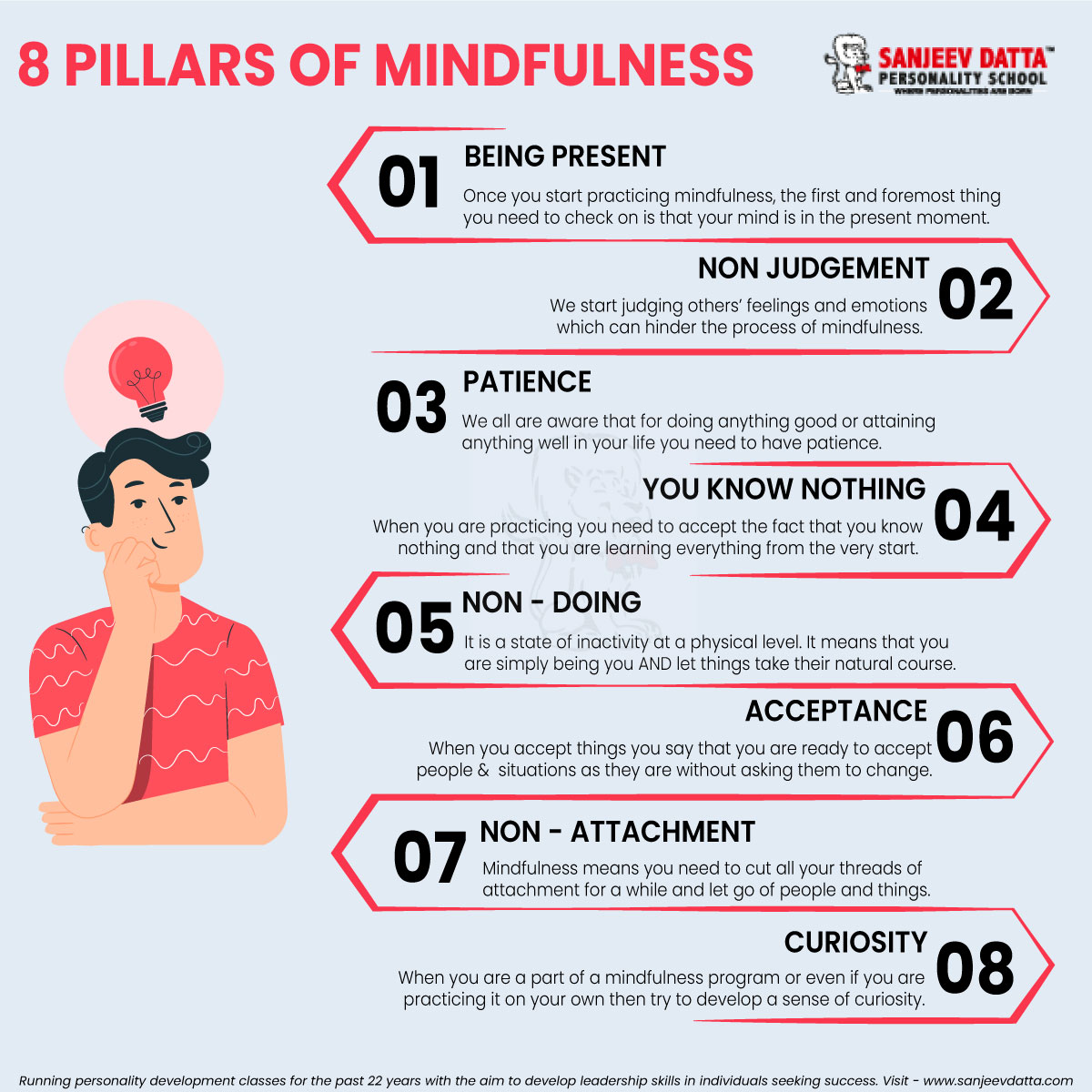Mindfulness is a sort of meditation in which you concentrate on being acutely aware of what you’re sensing and feeling in the present moment, without judging or interpreting it. Mindfulness is a relaxation technique that uses breathing techniques, guided imagery, and other techniques to assist the body and mind to relax and relieve stress. Mindfulness can be practiced in a variety of ways, but the goal of any mindfulness technique is to develop a state of attentive, focused calm by paying attention to thoughts and sensations without judgment. The mind can refocus on the current moment as a result of this technique. Mindfulness activities for college students can aid in the regulation of emotions, the reduction of stress, anxiety, and sadness. It can also assist us in focusing our attention and objectively observing our thoughts and feelings. Students benefit from mindfulness because it allows them to better manage their stress and get through it faster. Even micro-sessions of a few minutes or less of mindfulness practice provide health advantages. Mindfulness training has been shown in studies to boost both cognitive performance and stress resilience.
Interesting Mindfulness Activities for College Students:
-
The Body Scan:
The Body Scan is a popular mindfulness exercise among practitioners. It does not require any props or tools, and it’s simple enough for even the most inexperienced performers to master. In the body scan, exercise one needs to lie down and be aware of their breathing, noticing the rhythm and the experience of breathing in and expelling out. The facilitator then directs attention to the body, including how it feels, the texture of clothing against the skin, the shape of the surface on which the body is lying, and the body’s and environment’s temperature. A standard Body Scan goes over each portion of the body, paying particular attention to how each feels. Typically, the scan systematically proceeds through the body from starting at the feel to moving upwards.
2. Mindful Seeing:
The lack of visual cues might be oppressive for some people. After all, having a good imagination isn’t something that everyone is born with. Anyone who identifies with this may benefit from the activity of Mindful Seeing. It’s a basic activity that only requires a window with some sort of view. Observe and notice different things without labeling them, try noticing the colors, patterns, and textures. Observe how the grass or leaves move in the breeze. Take note of the numerous shapes that can be seen in one small section of the world. Try to imagine the world outside your window through the eyes of someone who has never seen these sights before. This activity is followed by a thoughtful personality development course to help you understand from others’ points of view.
3. Practice Daily Gratitude:
Gratitude has a strong and persistent relationship with happiness in positive psychology research. Gratitude assists people in experiencing more pleasant emotions, appreciating excellent experiences, improving their health, dealing with adversity, and forming meaningful connections. Humans have a proclivity towards recalling unfavorable experiences. When it comes to remembering the good, though, not so much. Gratitude assists us in maintaining this equilibrium. There is no “correct” way to practice thankfulness, but one can set aside some time each day to write down things for which they are grateful. People who consistently practice gratitude by noticing and reflecting on the things they’re grateful for feel more alive, sleep better, express more compassion and kindness, and even have stronger immune systems.
Visit: ways to practice gratitude
4. Mindful Listening:
Listening with awareness is a valuable ability that may be practiced in a group setting. People thrive when they feel fully “heard” and “seen,” and careful listening allows us to shift our attention away from ourselves and our responses. Instead, this type of listening can generate an inner calm in which both parties are free of assumptions or judgments, and the listener is not distracted by internal chatter while acquiring useful constructive communication skills. According to the best personality development coach, by removing blockages in that two-way street, mindful listening can help you enhance your relationships. It can improve your understanding and compassion, as well as less frustration if you listen thoughtfully to your partner, friend, family member, or colleague.
Visit: how to improve lsrw skills
5. Mindful Breathing:
This activity is excellent for refocusing the mind on the significance of our breathing. Stress causes us to take shallow breaths, as it turns out. Deeper “belly breaths,” on the other hand, help us to concentrate and relax. Students should sit or stand for around five minutes and breathe deeply and slowly. On the inhale, count to three, then on the exhale, count to three again. While following this place your hand on your stomach and feel the air go in and out.
Visit: Games to improve Presence of Mind
Students can increase their awareness of their emotions and the people around them by learning simple mindfulness activities. It will also assist them in better coping with obstacles and increasing their empathy for others. Mindfulness activities for college students will help them reduce and manage their stress and boost their problem-solving ability by increasing productivity. Therefore every student should incorporate mindful activities for a better living.
At Sanjeev Datta Personality School, our focus is to connect with the individual on a personal-professional level and develop leadership skills, presentation skills, public speaking, body language and more.
For more details, contact us now!








